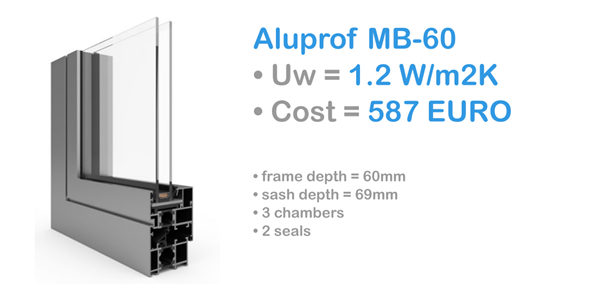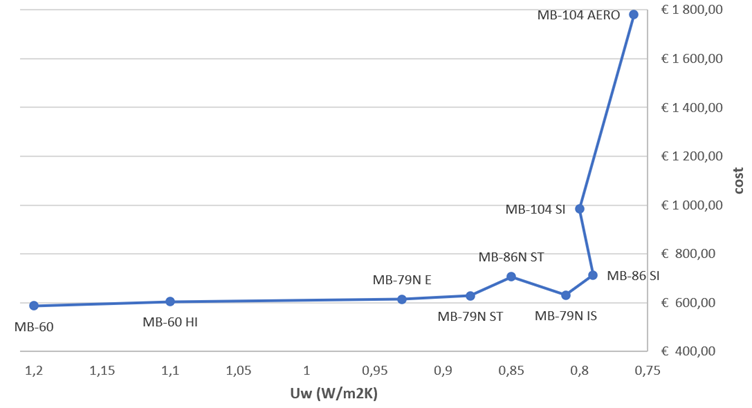
All window and door system providers will head their marketing materials with their technological advancements, innovations and flagship products. This is an essential practice that allows them to remain in the leading group of industry manufacturers. But are these top tier products appropriate for the average customer?
As an example we consider a selection of products provided by the company Aluprof, one of the leading manufacturers of aluminium systems for the building industry in Europe, considering the fine balance between cost and efficiency.
The Line up
So what might we conclude from the above?
In many cases the thermal requirements are set by the local legislation of the country or state where the windows are being installed. For example in Poland windows in new construction are required to all have a Uw below 0.9W/m2K. Estimators may in this situation select MB-79N which is the most economical system likely to achieve this standard. Variants E / ST / SI do not have any visible differences when the windows are assembled but they do have a bearing on the cost. So a proficient estimator can select the sub-system to enable each window to meet the requirements. Bearing in mind the smaller the window the lower the performance. Triple glazed units being generally more thermally efficient than window frames. So the more glass in proportion to frame the higher the thermal performance.
Another common motivator is when there is a performance requirement to meet the criteria of institutions who offer partial finance for thermos modernization of older buildings.
It’s clear to see from the table above there is a premium to pay for windows that have been certified as a Passive House Institute certified component. Partly due to the frame depths resulting in a larger amount of aluminium used. And partly due to the innovative insulation materials adopted (e.g. aerogel).
So who might these premium windows interest?
- People who are striving for their project to attain a Passive House Institute certificate.
- People who may wish to increase the value of their property.
- People who are passionate about zero carbon and maybe for ecological reasons.
- People who are concerned about the health benefits. Passive house design by its fundamental nature creates a living space that minimizes thermal bridging of the building envelope and when combined with a mechanical heat recovery ventilation system eliminates issues with mold and build up of condensation.
- Passive building creates a very comfortably living environment.
The above figures are indicative suggested retail prices and do not represent a commercial offer.
For MB-60 / MB-79N / MB-86N for comparison we have considered:
IGU = 4 / 18Ar / 4 / 18Ar / 4 (Ug=0.5W/m2K)
Warm spacers = Swiss Spacer Advanced
standard test dimension turn and tilt windows = 1230mm x 1480mm
Fittings = Roto alu with spindle handle
For MB-104 SI and MB-104 AERO:
Windows specified as per Passive House Institute certified models
* IGU = 4 / 16Ar / 4 / 16Ar / 4 (Ug=0.7W/m2K)
Warm spacers = Swiss Spacer Ultimate
* this difference is the reason MB-86 SI is showing a higher thermal performance than MB-104 SI (the Passive House Institute certificate uses an IGU with Ug=0,7W/m2K)
standard test dimention turn and tilt windows = 1230mm x 1480mm
Fittings = Roto alu with spindle handle
For further information on the systems shown above please contact.










